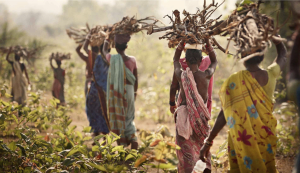What chance for rural India and rural media, in particular?
Agriculture never makes news! And all news today, urban news, right?
Unless there is some disaster like farmers’ suicides or some natural disasters! How sad and how our own priorities of living are corrupted. Corrupted by whom?
 Our own politics and economics is one thing. Our own national traits, our own history have all given Indians their own twisted life’ beliefs and superstitions.
Our own politics and economics is one thing. Our own national traits, our own history have all given Indians their own twisted life’ beliefs and superstitions.
Modernity is a heavily-loaded word and it is also very urban phenomena, for agriculture, rural living and some such priorities are no more priorities with our own rulers!
Why this discourse?
This is no discourse, but certain disenchantment with our national priorities. Specially for Vadamalai Media, it is an uphill task given the normal priorities of development and government’s pro-business tilt.
Print media is in retreat, we are tired of hearing from the pundits and that is why we never got to hear any sensible person in government or pubic life talk of agriculture.
Anyway, our commitment is for enlightened agriculture policy-making and articulation of issues. Any way this is a country which had had a long history of famines under the British Raj. Just now we read a brief history of the Indian famines in the 1860s onwards, successive famines, in states like Odisha and also later in other parts and finally the most infamous for all, the Bengal famine of early 1940s.
A.O.Hume who founded the Indian National Congress was impelled by, among other things, the perennial debt of the Indian peasant. Soon after Dadabhai Naoroji wrote his classic, the Indian poverty and the unBritish Rule. So too his contemporary, another Congress President, R.C.Dutt.
Now, in independent India we had had our own failures and successes in tackling food shortages and the Green Revolution was a bright chapter.
Now?
Indian agriculture is a vast subject and a vast territory.
Our media venture in this area has found a niche market and a trusted clientale.
We have been helped to sustain this ‘rash leap into the dark’ by the sheer persistence. By the sheer commitment. A commitment that was borne of our own background.
A rural background that ties up to the land and the helpless farmer in far flung areas where angels fear to tread!
On the serious side, the majority of the Indian population is still poor and live in the villages.
India will remain for long (forever?) in the villages. (As in the rest of the countries in the world, right?).And right now, the average villager is suppressed and oppressed by several forces.
One is the neglect of the villagers by the government, including the incumbent government. Justice for the farmers, including their right to property. The status of this Constitutional right is yet to be settled. So too many other land-related issues.
Vadamalai Media, now in its 25th year, is also into digital space. Our website (www.agricultureinfromation.com) is the world’s largest agri portal. We intend to deliver our prompt and online services through the digital medium as well.
We have proved one or two myths also in our media journey. All media is not driven by greed and profit. Once journalism was categorised as journalism proper and the rest as development journalism. The pay and perks and social recognition were low. Whereas in urban centres high profile journalism thrived. Good perks, often tied with other thrown-ins like a part in Prime Minister’s foreign journeys etc.
Also, sometimes certain awards, the Padma and non-Padmas!
So, we had thrived and are able to stand up to the many pretensions and fears masqueraded as fighting for independent journalism.
Independent journalism, as of now, is non-existent. Journalists everywhere have become, it seems, endangered species.
There is everywhere, as they say in Europe, the rise of lliberalism, in media and in the rest of the society.
One reason for the devalued status of the media in the scheme of things is the media barons’ own greed and aggrandisement.
The growth in the Indian media, as on date, is fine for certain categories. Vadamalai publishes also in Tamil and Kannada languages.
We are small, not only beautiful but also reliable and trustworthy too!
Even the biggest corporate have acquired taste for media power.
So, when the politics becomes illiberal, the media too becomes party to this development and the successful politician, man or woman, who acquires power through sheer populism become paranoid and the fear of the media also percolates down the line. Also the independent judiciary are all distorted.
Media experts say that in India the regional language media is predominant; some 60 percent of the audience speak the regional languages. So, the quick-fix monopoly industry tries its hands in regional cinema and thus, the once healthy film industry has now become too bloated and produces some of the worst trashes in the name of popular cinema!
Even the art film, the quality cinema, even in some few languages like Marathi and Bengalis struggle to survive and find its feet.
A healthy country, a healthy government must have a vigorous and open-minded media policy, culture policy to encourage a healthy and free society.
The outlook right now is rather not comfortable. The DD is a drag. The film censor board is another disaster. How much valuable time and energy the country spent on getting clearance for one film!
All our art and culture institutions are almost shut up.
So, media and culture are subjects that, luckily, don’t lend themselves to talks by simpletons. Let us hope, there is a more open-minded room for so much that is more vital and valuable that is now left out of our present national discourse.
So, agricuture, agriculture media and such other priorities have to fight for a place in the sun.
Brand power of the agri media also needs attention.